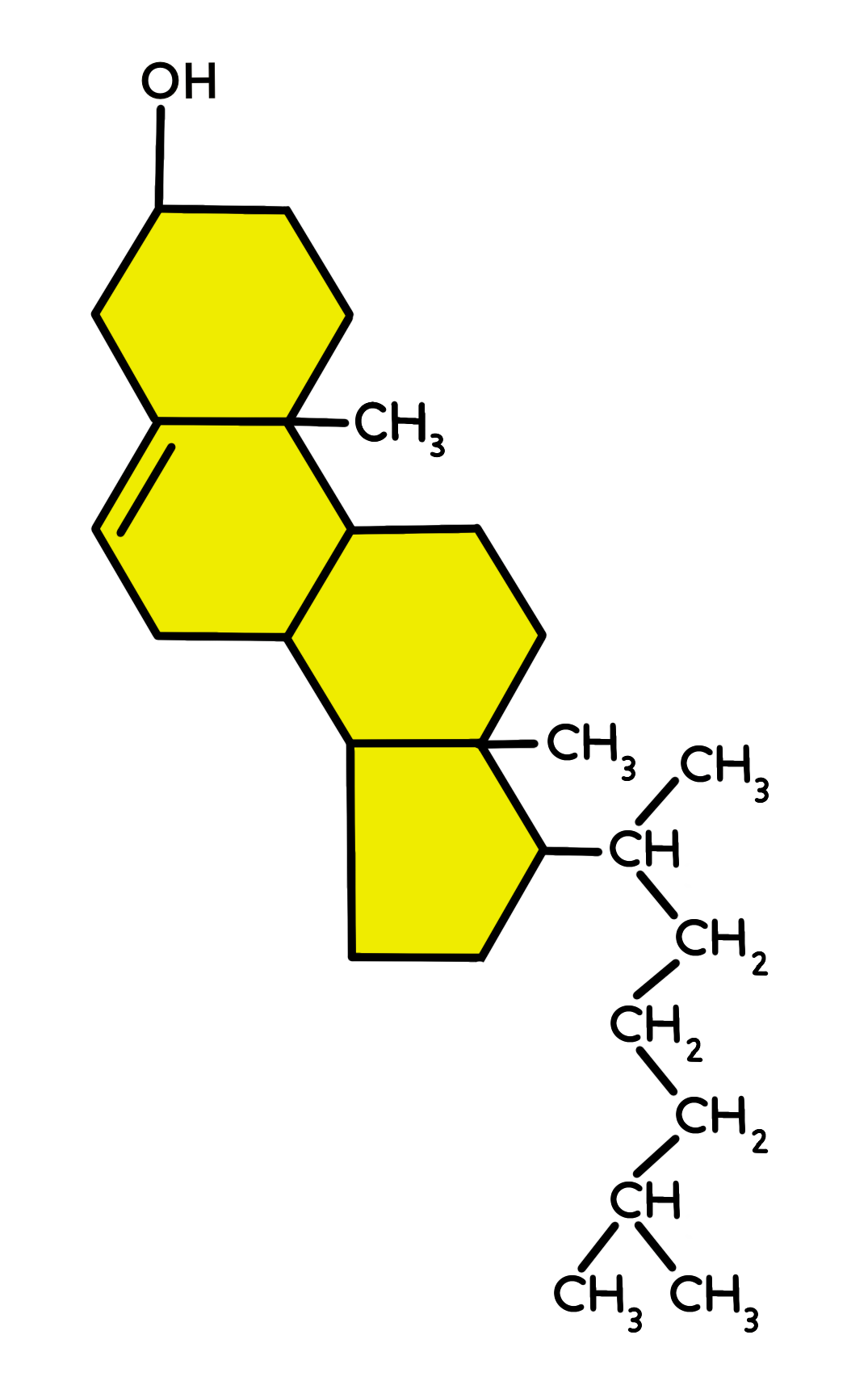Steroid Lipids
A steroid lipid is a type of lipid that differs in structure from triglycerides and phospholipids. Steroid lipids consist of four hydrocarbon rings (three hexamers and one pentamer) joined together. Despite their unique structure, steroids share solubility characteristics with other lipids, being nonpolar (hydrophobic).
The best-known and most abundant steroid lipid in the body is cholesterol. Cholesterol is crucial for several reasons:
- Cellular Membranes: It is required to build and maintain cellular membranes.
- Bile Synthesis: Cholesterol is used to synthesize bile, which is essential for the digestion of fats.
- Steroid Hormones: It is also used to synthesize steroid hormones, which are vital for the healthy growth and development of most tissues in our body.
Cholesterol is essential to all animal life, and animals (including humans) can produce this important molecule. Additionally, we can ingest cholesterol through animal products such as cheese, egg yolks, beef, and pork, which contain varying amounts of cholesterol.
However, excess cholesterol can lead to the formation of deposits on the inner walls of blood vessels. These deposits can harden and result in a condition known as atherosclerosis.
